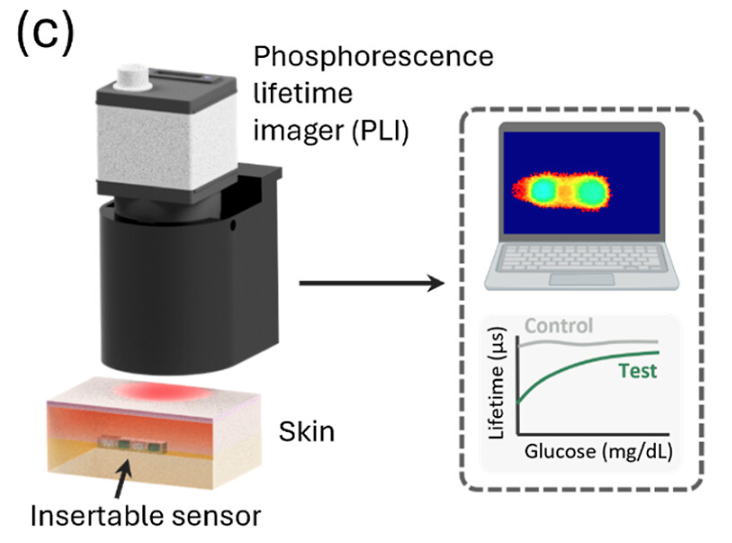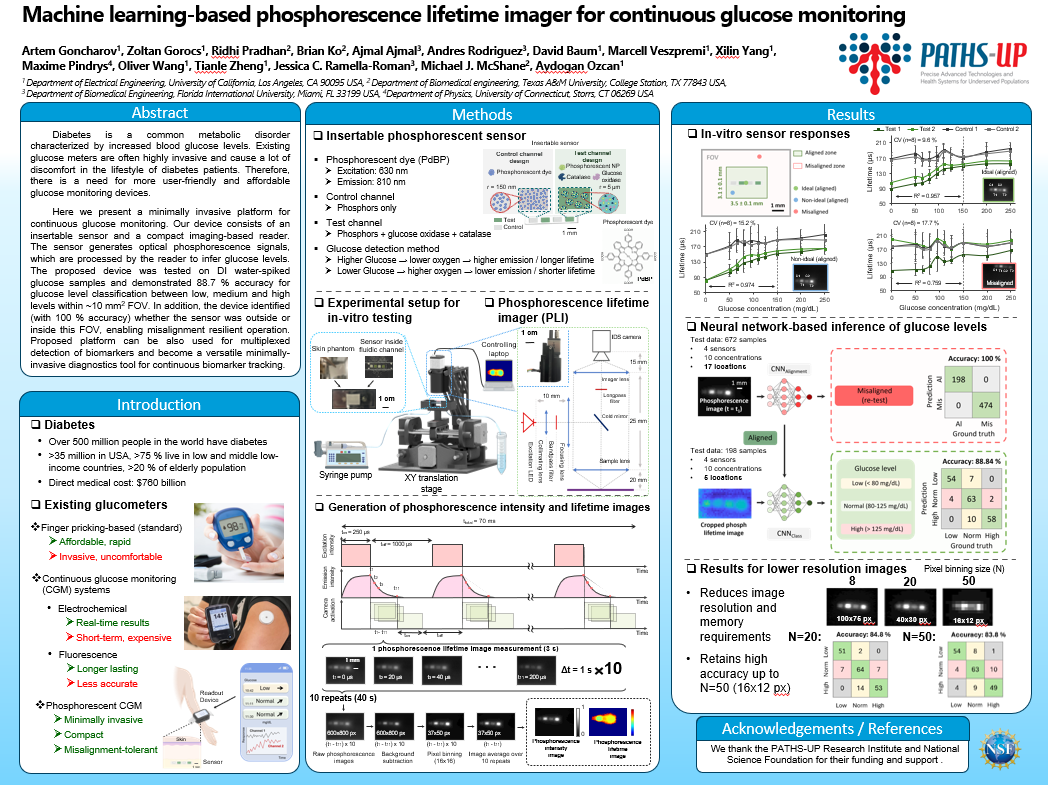Summary:
UCLA researchers in the Department of Electrical & Computer Engineering have developed a new phosphorescence lifetime imaging (PLI) and deep learning based continuous glucose monitoring platform with improved accuracy.
Background:
Glucose is a biomarker for diabetes, a chronic disease that affects over 450 million people globally. Close monitoring of glucose levels is essential to prevent hypo- and hyperglycemic events, which can cause severe health complications, including ketoacidosis, kidney failure, and death. While conventional glucose monitoring relies on invasive and painful finger pricks, continuous glucose monitoring (CGM) systems have been developed to provide more user-friendly methods for real-time glucose monitoring. These systems typically rely on subcutaneous electrodes that transmit blood glucose concentration information to the patient for review. However, the electrodes can cause inflammation, which disrupts glucose readings. Optical methods for glucose monitoring have recently emerged, but these sensors often require invasive subcutaneous implants, which may lead to additional complications. In addition, the electrodes of current CGM systems are expensive and require replacement every 1-2 weeks, which leads to patient discomfort and operation disruption. There is an urgent need to develop new CGM systems that are non-invasive, highly accurate, durable, and are also low-cost to spur broader implementation.
Innovation:
A research team led by Professor Aydogan Ozcan of the Electrical & Computer Engineering Department have developed an insertable CGM system that uses phosphorescence lifetime imaging to monitor glucose levels. Phosphorescence is an appealing optical technique for CGM applications because of the improved signal-to-noise ratio and increased sensitivity compared to state-of-the art. This imaging-based system uses a trained neural network to both detect misalignments of the implanted sensor and classify glucose concentration levels as low, normal, or high compared to baseline. With 88.8% glucose inference accuracy and detection of sensor misalignments on the millimeter scale, this system is poised to significantly improve the standard of care for the hundreds of millions of patients suffering from diabetes. Furthermore, this CGM sensor can operate for up to 90 days post-implantation, offering a longer-term and more cost-effective solution with reduced patient discomfort. This novel imaging platform may be multiplexed to enable the continuous monitoring of multiple biomarkers in parallel, extending its capabilities beyond diabetes management to more complex disease monitoring.

Figure 1c, ACS Nano 2024, 18, 34, 23365-23379
Potential Applications:
• Diabetes management
• Critical care glucose monitoring
• Complex disease monitoring
Advantages:
• Compact
• High accuracy
• Sensor misalignment-tolerance
• Cost-effective
• Improved biocompatibility
• Easier implantation
• Prolonged durability
• Multiplexing capabilities
Development-To-Date:
Researchers have validated the platform using phantom skin and glucose-spiked samples.
Related Papers:
Insertable Glucose Sensor Using a Compact and Cost-Effective Phosphorescence Lifetime Imager and Machine Learning, ACS Nano, 18; 34. A. Goncharov, Z. Gorocs, et al.
https://pubs.acs.org/doi/10.1021/acsnano.4c06527
Reference:
UCLA Case No. 2024-260
Lead Inventor:
Professor Aydogan Ozcan
Poster from the Inventors:
